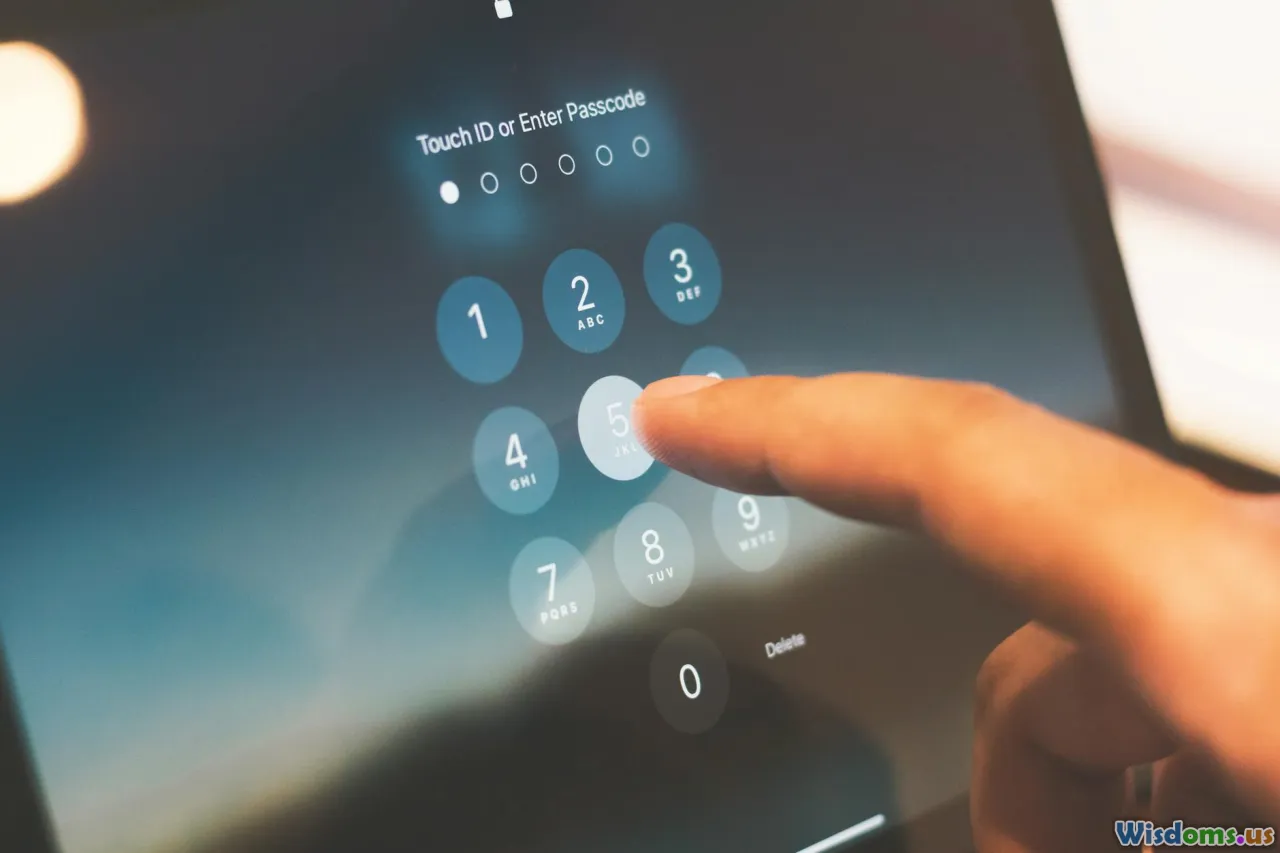
Comparing Bluetooth Hacking and WiFi Cracking Threats
19 min read Explore and compare the risks and attack methods associated with Bluetooth hacking and WiFi cracking in modern cybersecurity. (0 Reviews)
Comparing Bluetooth Hacking and WiFi Cracking Threats
Wireless technology is woven into our everyday lives, powering everything from headphones and smartwatches to laptops and connected home devices. Yet as these conveniences multiply, so too do the strategies and tools of cybercriminals intent on exploiting wireless vulnerabilities. Among the various threats, Bluetooth hacking and WiFi cracking remain two of the most relevant — and misunderstood. In this article, we break down the fundamental differences between these two wireless risks, highlight real-world attack scenarios, and provide practical guidance to help you safeguard your devices and data.
The Wireless Landscape: How Bluetooth and WiFi Differ

At first glance, Bluetooth and WiFi may appear similar: both are standards enabling wireless communication between devices, and both employ radio frequency (RF) waves. However, they serve distinct purposes, operate at different power levels, and have unique security implications.
Bluetooth is designed for short-range communication, typically within 10 meters, and is power-efficient — perfect for connecting peripherals like earphones, fitness trackers, and speakers. WiFi covers far larger areas and delivers higher bandwidth, connecting laptops, smartphones, and smart home hubs to the internet via a local area network.
Example: Pairing your smartphone to a wireless headset is a Bluetooth-based connection, while streaming video from your laptop to your TV over a home network uses WiFi.
The security models and attack surfaces for these technologies are different by design, making it vital to analyze their threats independently before comparing their impacts.
Anatomy of Bluetooth Hacking

Bluetooth hacking exploits vulnerabilities in the Bluetooth protocol or device implementation, often allowing attackers to intercept, manipulate, or inject data into Bluetooth connections. Understanding how these attacks work highlights their unique challenges.
Common Bluetooth Attack Vectors:
- Bluejacking: Attackers send unsolicited messages to nearby Bluetooth devices. While mostly a nuisance, it can be used for phishing.
- Bluesnarfing: Requires bypassing authentication to illicitly access information on a target device, such as contact lists and text messages.
- Bluebugging: Grants the attacker full control over a device, enabling actions like making calls, sending messages, or eavesdropping on conversations.
- Bluetooth Low Energy (BLE) Attacks: Exploit weaknesses in power-efficient IoT devices, often lacking robust security implementations.
Notable Example: The "BlueBorne" Attack
In 2017, security researchers at Armis Labs uncovered BlueBorne — a set of vulnerabilities affecting billions of Bluetooth-enabled devices. BlueBorne allowed attackers within Bluetooth range to execute code remotely, eavesdrop on communications, and propagate malware. Importantly, no pairing or interaction with the victim device was required.
According to Armis, over 5.3 billion devices were vulnerable when BlueBorne was first disclosed. While patches were quickly developed, unpatched devices remain open to exploitation years later.
Bluetooth Hacking Tools
Attackers often use tools like Bluesnarfer, Bluediving, and BlueMaho to automate discovery and exploitation. Portable Raspberry Pi-based attack kits loaded with these tools can fit in a backpack, making low-profile, location-based Bluetooth attacks simple to execute in public areas.
The Mechanics of WiFi Cracking

WiFi cracking targets the secrecy and integrity of wireless network data — usually with the goal of harvesting credentials, injecting malware, or intercepting sensitive information. The core threat lies in compromising wireless routers and their encryption.
Essential WiFi Attack Strategies:
- Packet Sniffing: Tools like
Wiresharkcapture unencrypted traffic, possibly revealing passwords or sensitive documents transmitted over the network. - WEP Cracking: Legacy networks using WEP (Wired Equivalent Privacy) can be cracked within minutes using brute-force attacks due to weak key scheduling and IV reuse.
- WPA/WPA2 PSK Cracking: More modern but still vulnerable if passwords are weak. Attackers induce devices to reconnect, capture the "four-way handshake," and use dictionary attacks to guess the password.
- Evil Twin/Man-in-the-Middle: The attacker sets up a rogue WiFi access point imitating a legitimate network, tricking users into connecting and stealing data or credentials.
Notable Example: KRACK
In 2017, the "KRACK" attack shocked WiFi users globally. KRACK exploits weaknesses in the WPA2 protocol's handshake process, allowing attackers within range to decrypt many types of previously secure wireless traffic. This vulnerability affected nearly every device connecting via WPA2 — routers, laptops, smartphones, and even IoT devices.
WiFi Cracking Tools
Tools like Aircrack-ng, Reaver, and Fluxion facilitate network discovery, packet sniffing, and key cracking. Off-the-shelf WiFi USB adapters can turn any laptop into a potent hacking device — illustrating how accessible WiFi cracking has become.
Bluetooth vs. WiFi: Comparing the Attack Surface

While both Bluetooth and WiFi operate over wireless spectra, their innate design differences shape the risks they carry and the types of attackers they attract.
Range and Exposure
- Bluetooth: Typically limited to 10 meters, with modern devices rarely sending most data in discoverable mode for extended periods.
- WiFi: Can be seen (and attacked) across a home's entire footprint and even outside buildings, especially with boosted antennas.
Insight: A Bluetooth attack generally requires an attacker in close proximity. WiFi cracking is possible from adjacent apartments or outside public venues, often undetected.
User Behavior and Device Diversity
- Bluetooth: Proliferates in small devices — headphones, watches, medical sensors, car audio, fitness “smart” wearables.
- WiFi: Runs on routers, computers, mobile devices, smart TVs, home automation hubs.
Bluetooth’s reach now extends deeper into personal health and safety applications, meaning a compromise could affect pacemakers, blood pressure monitors, or car locks. WiFi hacks, by contrast, often allow lateral attacks across home or office networks, threatening everything tethered to the same hotspot.
Attack Complexity
-
Bluetooth: Most exploits require the device to be in discoverable mode or have outdated firmware. Some attacks (like BlueBorne) bypass these restrictions, targeting underlying protocol flaws.
-
WiFi: Attackers need to capture handshake packets; success relies on weak passwords or unpatched software. Attacks like Evil Twin don’t crack encryption but exploit trust and user error.
Impact Severity
Both technologies pose serious risks, but the consequences vary widely. A successful Bluetooth attack may grant access to private communications or enable local manipulation of IoT devices. A WiFi crack, meanwhile, could open the floodgates, revealing all data moving across the network — web logins, emails, or worse.
Real-World Attack Scenarios: Bluetooth Breaches in Action

Let’s illuminate Bluetooth hacking with modern scenarios involving consumers and organizations:
1. Rogue Device in Public Transit
A security researcher, posing as an average commuter, hides a Bluetooth-enabled Raspberry Pi in a backpack while riding a train during rush hour. The automated setup scans for discoverable devices, logs sensitive device names and vendor details, and attempts known exploits on unpatched smartphones and wearables. In less than an hour, dozens of device contacts and text messages are covertly siphoned.
2. Attacking Hospital IoT Gear
Medical environments increasingly rely on Bluetooth for tracking equipment, monitoring vitals, and transmitting sensor data. In a recent test, cybersecurity consultants discovered hospital inventory scanners with default pairing codes and no firmware updates. A simulated attacker walked within range and intercepted real-time location data, highlighting the need for rigorous device auditing and patch policies in healthcare.
3. Conference Room Espionage
At a large conference, an attacker launches Bluejacking campaigns and sets up a rogue Bluetooth headset with a familiar brand name. Unsuspecting users attempting to pair inadvertently route all audio through the attacker’s hardware, enabling eavesdropping — especially in executive breakout sessions.
High-Profile WiFi Cracking Incidents

The widespread adoption of WiFi technology in homes, businesses, and public spaces makes it an enticing target for both mass attackers and cyber-espionage operations. Here's how WiFi cracking plays out in the real world.
1. Public WiFi Hotspot Attacks
Coffee shops and airports with open WiFi are ripe for exploitation. Attackers create "Evil Twin" access points that mimic legitimate SSIDs (network names); when patrons connect, their unencrypted traffic is easily harvested. In 2018, security firm Avast found that 44% of public WiFi users' personal information — from emails to bank credentials — could be intercepted within minutes.
2. Corporate Espionage and Drive-By Attacks
In a celebrated 2010 case known as "WarDriving," cybercriminals used cars outfitted with directional antennas to roam city streets, mapping and cracking thousands of WEP-secured business networks at blast speed. Similar techniques today target weak WPA2 passphrases, aiming to breach office networks for competitive intelligence or to install ransomware.
3. Smart Home Exploitation
A recent study by the University of Michigan found that more than half of smart home networks tested in a residential neighborhood used default router credentials or insecure WiFi settings. Once attackers gained access, they took control of security cameras, thermostats, and alarm systems remotely.
Defending Against Bluetooth-Based Attacks

Mitigating Bluetooth risks doesn’t require paranoia, but it does call for smart, proactive habits. Consider these steps:
- Update firmware regularly for all Bluetooth-enabled devices, especially those with sensitive roles.
- Turn off Bluetooth when not actively using it — especially in crowded, unfamiliar spaces.
- Limit discoverability: Set devices to "non-discoverable" unless actively pairing.
- Monitor paired devices: Remove obsolete or suspicious entries from your device’s Bluetooth settings.
- Avoid default PIN codes: Always change the default pairing code, even for obscure IoT devices.
Insider Tip: On travel or in busy locations, keep Bluetooth off. Many attacks, especially automated ones, are opportunistic.
Defending Against WiFi Cracking

Robust WiFi defense supplements any home, office, or mobile security regimen.
- Use WPA3 encryption, if supported, or WPA2 with a strong, complex passphrase.
- Change default router credentials: Administrative rights are often left at factory settings, easy prey for attackers.
- Keep router firmware updated: Set reminders, as router manufacturers often release silent critical patches.
- Disable WPS (WiFi Protected Setup): Bruteforcing WPS PINs remains a popular avenue for WiFi crackers.
- Hide SSID broadcasting: While not foolproof, reducing your network’s visibility blocks drive-by attacks by the casual opportunist.
- Cautious public use: Always treat public WiFi as hostile — prefer cellular networks, use VPNs for any sensitive tasks, and avoid auto-connecting to open networks.
Insider Tip: Invest in high-quality, modern WiFi hardware. Cheap, outdated routers often lack robust security measures.
Best Practices for Personal and Organizational Security

While technical defenses matter, the human element remains crucial. Here are actionable steps individuals and security professionals can take to bolster wireless security:
For Individuals
- Security Awareness: Regularly attend to device notifications and update suggestions, treating them as critical.
- Multi-Factor Authentication: Whenever possible, turn on MFA for WiFi portals, apps, and even device unlock screens.
- Network Segmentation: Use guest networks for visitors and smart home devices to isolate sensitive personal data.
For Organizations
- Policy Enforcement: Design comprehensive wireless use policies — restrict Bluetooth to vetted devices, scan for rogue access points regularly.
- Continuous Training: Teach staff about the dangers of pairing with unknown devices or joining suspicious WiFi networks.
- Incident Response: Have clear plans for what to do in the event of device compromise; practice tabletop exercises simulating wireless breaches.
- Device Inventory: Know exactly what hardware communicates over Bluetooth or WiFi, especially in regulated industries (healthcare, finance, manufacturing).
The Evolving Threat: Tomorrow’s Bluetooth and WiFi Security Landscape

The lines between Bluetooth and WiFi — and their vulnerabilities — continue to blur. Emerging trends, from 5G-driven IoT to AI-powered hacking tools, mean that defenses deployed today may become obsolete tomorrow.
Innovators in both fields are addressing these risks:
- Bluetooth SIG (Special Interest Group) is developing improved key management and encryption for future protocol versions.
- WiFi 6 and WPA3 promise stronger privacy, resisting many current attacks. Yet rollout and adoption lag behind, especially for low-cost or legacy devices.
The Internet of Things compounds this challenge. Many "smart" home devices, printers, medical gear, and wearables are built for lowest cost, often with little attention to long-term firmware support or security best practices. As these permeate sensitive areas of our lives — controlling locks, recording video, tracking health — their exploitation multiplies the risk to privacy, safety, and even physical well-being.
Actionable Advice: Always check if your devices, whether at home or work, will continue to receive security updates before buying. Vendors with transparent update policies and active support forums are typically more trustworthy.
No single tool or technique guarantees safety, and no wireless network is absolutely immune to sophisticated attackers. But awareness, layered defenses, and informed behavior offer strong odds against the most common forms of Bluetooth and WiFi exploitation.
Ultimately, keeping your digital and physical spaces secure isn’t about fearing technology; it’s about using it wisely. As wireless innovation races ahead, let vigilance, education, and responsibility be your first and best lines of defense.
Rate the Post
User Reviews
Other posts in Cybersecurity
Popular Posts















